3 How to examine a sick person
3 How to examine a sick person
3 How to examine a sick person
You also want an ePaper? Increase the reach of your titles
YUMPU automatically turns print PDFs into web optimized ePapers that Google loves.
32<br />
Where There Is No Doc<strong>to</strong>r 2011<br />
BREATHING (RESPIRATION)<br />
Pay special attention <strong>to</strong> the way the <strong>sick</strong> <strong>person</strong> breathes—the depth (deep or<br />
shallow), rate (how often breaths are taken), and difficulty. Notice if both sides of the<br />
chest move equally when she breathes.<br />
If you have a watch or simple timer, count the number of breaths per minute (when<br />
the <strong>person</strong> is quiet). Between 12 and 20 breaths per minute is normal for adults and<br />
older children. Up <strong>to</strong> 30 breaths a minute is normal for younger children, and 40 for<br />
babies. People with a high fever or serious respira<strong>to</strong>ry illness breathe more quickly than<br />
normal. For example, more than 30 shallow breaths a minute in an adult usually means<br />
pneumonia, as does 60 breaths a minute for a newborn baby.<br />
Listen carefully <strong>to</strong> the sound of the breaths. For example:<br />
• A whistle or wheeze and difficulty breathing out can mean asthma (see p. 167).<br />
• A gurgling or snoring noise and difficult breathing in an unconscious <strong>person</strong><br />
may mean the <strong>to</strong>ngue, mucus (slime or pus), or something else is stuck in the<br />
throat and does not let enough air get through.<br />
Look for ‘sucking in’ of the skin between ribs and at the angle of the neck (behind<br />
the collar bone) when the <strong>person</strong> breathes in. This means air has trouble getting<br />
through. Consider the possibility of something stuck in the throat (p. 79), pneumonia<br />
(p. 171), asthma (p. 167), or bronchitis (mild sucking in, see p. 170).<br />
If the <strong>person</strong> has a cough, ask if it keeps her from sleeping. Find out if she coughs<br />
up mucus, how much, its color, and if there is blood in it.<br />
Pay attention <strong>to</strong> the strength, the rate, and the regularity of the pulse. If you have a<br />
watch or timer, count the pulses per minute.<br />
PULSE (HEARTBEAT)<br />
To take the <strong>person</strong>’s pulse,<br />
put your fingers on the wrist<br />
as shown. (Do not use your<br />
thumb <strong>to</strong> feel for the pulse.)<br />
If you cannot find the pulse in<br />
the wrist, feel for it in the neck<br />
beside the voicebox.<br />
NORMAL PULSE FOR PEOPLE AT REST<br />
adults . . . . . . . . from 60 <strong>to</strong> 80 per minute<br />
children . . . . . . .80 <strong>to</strong> 100<br />
babies . . . . . . . .100 <strong>to</strong> 140<br />
Or put your ear directly or<br />
the chest and listen for the<br />
heartbeat (or use a stethoscope<br />
if you have one).



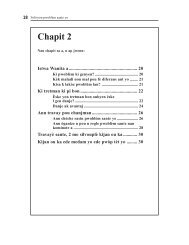
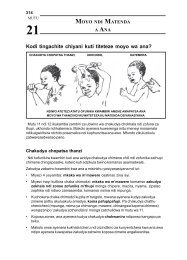
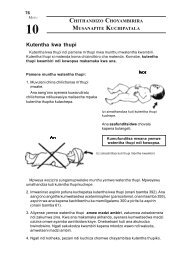
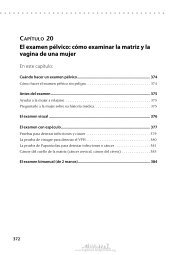
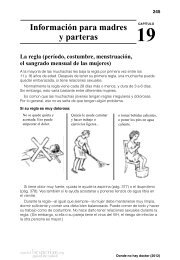
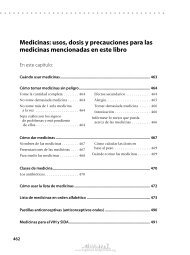
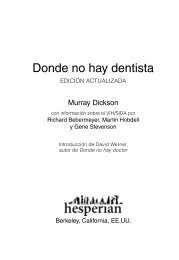
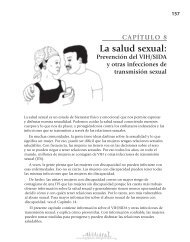
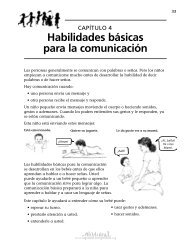


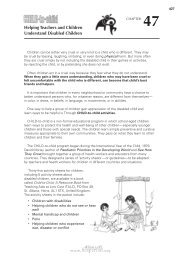
![kl/jf/ lgof]hg](https://img.yumpu.com/10041849/1/184x260/kl-jf-lgofhg.jpg?quality=85)
